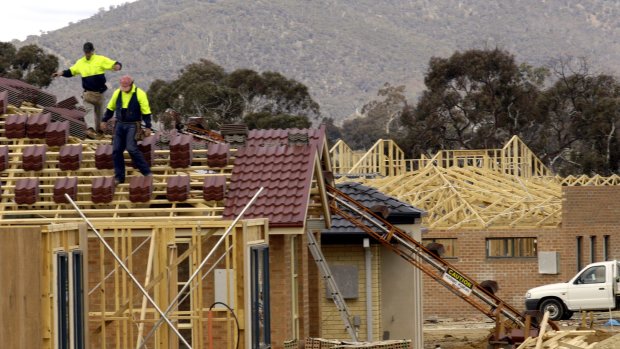Giving people access to their own money is an uncontroversial idea. Young people trying to enter the housing market should be granted access to their own superannuation accounts to help make it happen.

There is a simple solution to this problem. Many young people already have a house deposit, or a partial deposit, set aside. They are just not able to access it because it is locked away in a superannuation account that they are not allowed to get their hands on until they retire.
There are many layers to the senselessness of this policy. The most obvious is that money in your superannuation account is yours. You have earned it, and you should be able to do with it what you like. If you want to use your money to buy a house you should be free to do so.
But even if one accepts the rationale for the current system of government-mandated savings there are a number of reasons why granting access to superannuation for first home buyers makes sense.
Money set aside in your superannuation account is invested in the expectation that the initial capital you have put into the account will grow over the long run until you are ready to retire. There are a range of investments that you can choose to make, but one of them is property. Including residential property.
In fact, according to the latest Russell Investments/ASX Long-term Investing Report that is the best investment your superannuation fund could have made over the last 20 years. Superannuation funds that invested in residential investment property in the 20 years to 2016 returned an average of 9.7 per cent per year, the highest of any investment class measured in the report. Australian shares returned 9.1 per cent, and Australian listed property gave returns of 6.9 per cent.
So your superannuation fund is very likely to be investing your money in residential property anyway. It is not much of a leap to allow for that money to be invested in your own home rather than someone else's.
The other thing to keep in mind is how important it is to own your own home in retirement. The disparity in outcomes between people that own their own home and those that do not is stark.
With house prices continuing to go up, and young people finding it increasingly difficult to get their foot in the door, this problem is set to explode over the coming decades.
The problem of not owning a home in retirement is that you have to keep paying rent right up until the day you die. Recent research from the Australian Housing and Urban Research Institute projects that by 2050 there will be 832,319 people over the age of 50 living in private rental accommodation, up from just over 420,000 today.
This is not just a problem for older Australians. Young people also risk depleting their savings during their working life as they continue to rent before buying a home, potentially offsetting any benefits of forced saving through compulsory superannuation.
We need to be clear about one aspect of this debate: allowing access to superannuation to buy a home is not going to bring down house prices. It is much more likely to have the opposite effect.
But this is not a policy aimed at housing affordability. Only releasing more land and relaxing density restrictions can bring house prices down over the long run. This is a policy aimed at helping young people to become members of the homeowners' club.
Treasurer Scott Morrison should be applauded for looking at creative solutions to break down the rigidity of the current superannuation investment model. Allowing individuals to access their own money held in superannuation accounts is not a radical proposal. Especially if the money is being used to invest. Giving young Australians the flexibility to use super to invest in their own home is just the kind of positive, forward-thinking policy a modern Coalition government should be championing.
No comments:
Post a Comment